1970's - Transition Years:
Pop vs. Country
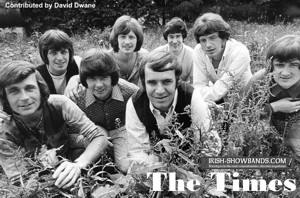 In
1968, in what was to become the first of the "defections" that
rocked the showbands, Tommy Swarbrigg left Joe Dolan and the
Drifters and basically took the whole band with him, leaving only
Joe and brother Ben to carry on. Tommy formed
The Times, and became one of the
first of the "new" bands.
In
1968, in what was to become the first of the "defections" that
rocked the showbands, Tommy Swarbrigg left Joe Dolan and the
Drifters and basically took the whole band with him, leaving only
Joe and brother Ben to carry on. Tommy formed
The Times, and became one of the
first of the "new" bands.
Over the next few years, the changes kept
coming. Brian Coll left the
Plattermen
to form The Buckaroos, and Rob
Strong took over lead vocals, radically altering the band's
direction. The Casino Showband
dropped their showband image, donned war paint and renamed
themselves The Indians.
Joe McCarthy and Brendan O'Brien left the
Dixies to form
Stage 2. Half of the Miami
Showband left Dickie Rock to form
The Sands (Dickie would leave a
few years later to form his own band as well). The
Premier Aces lost
Johnny Carroll, Jimmy O'Neil and Sonny Ward when they left to form
The Swallows. Larry Cunningham left the
Mighty Avons to
form his own band, The Country Blue Boys and shortly after both Ronnie Griffiths had gone
to form American Pie
and Gene Stuart had left to form
The
Homesteaders. Sonny Knowles was replaced in the
Pacific by the younger Peter Law while
Eileen Reid and the Cadets simply packed it in around 1972.
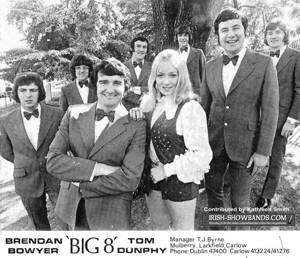 In
his book, Goodnight, God Bless and Safe
Home, Finbar O'Keefe quote's a Spotlight Poll of the top
twenty bands of 1969. They included The
Dixies, Dreams,
Drifters, Freshmen, Hoedowners, Miami,
Mainliners,
Mighty Avons, Royal, Sands, Capitol,
Cadets,
Nevada, Pacific,
Plattermen,
Premier Aces, Royal Blues, Sounds, Times, and Victors.
Within a matter of three years, almost all these bands had undergone
a major change in musical direction, or lost key members to other
bands.
In
his book, Goodnight, God Bless and Safe
Home, Finbar O'Keefe quote's a Spotlight Poll of the top
twenty bands of 1969. They included The
Dixies, Dreams,
Drifters, Freshmen, Hoedowners, Miami,
Mainliners,
Mighty Avons, Royal, Sands, Capitol,
Cadets,
Nevada, Pacific,
Plattermen,
Premier Aces, Royal Blues, Sounds, Times, and Victors.
Within a matter of three years, almost all these bands had undergone
a major change in musical direction, or lost key members to other
bands.
The dawn of the seventies revealed a showband
world in turmoil. Crowds had started slipping away, perhaps tiring
of the now stale showband format. The bands themselves were starting
to "fall apart." However, in many cases, the bands were simply
adapting to a new environment and several stars decided it was time
to go out on their own. Of course, much of this turmoil was also
created by unequal sharing of the riches being generated by the
bands, both between the members of bands, between bands and their
management and between the bands and dance hall promoters.
Another new form of entertainment in Ireland
also beckoned: cabaret. When the lounge bar craze swept the nation
in the late 1960's, those pubs had mainly been the
home of small groups, singing folk and rebel songs, but as the scene
grew, the pubs got larger, singing lounges sprung up all around the
country (before the days of the drink driving crack down) and larger venues
needed larger stars. Stars also got tired of spending up to 10 hours
a day in a cold van, heading from Dublin to Donegal and missing
families. A variety of cabaret gigs opened up in Dublin and other
major towns, allowing singers to make more money, travel less, and
be in charge of their own affairs.
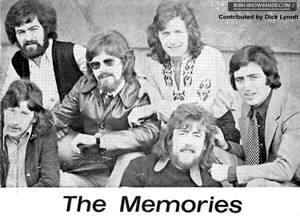 Perhaps the biggest shock came when
Brendan Bowyer and
Tom
Dunphy announced they were leaving The
Royal Showband to form
the Big Eight, a band that
would spend half the
year working in Las Vegas. When the biggest star in the country left
to look for greener pastures, the industry was actually pronounced dead by
many fans of the era.
Perhaps the biggest shock came when
Brendan Bowyer and
Tom
Dunphy announced they were leaving The
Royal Showband to form
the Big Eight, a band that
would spend half the
year working in Las Vegas. When the biggest star in the country left
to look for greener pastures, the industry was actually pronounced dead by
many fans of the era.
However,
at the same time, a new breed of band was taking shape. The late
sixties and early
seventies would see a split in the world of showbands into two
distinct categories: pop or
country. Although most bands continued to play a variety of
musical styles, there was a definite move to identify themselves as
one or the other of these two genres.
On the pop side, bands like
The Real
McCoy, Arrows,
Chips,
The Memories and
Tweed joined overhauled
showbands like The Miami,
Sands, Nevada, Plattermen and
Freshman
to form the basis for a new pop culture in Ireland. Eventually,
these bands would provide the impetus for the radical changes in
Irish pop music in the 1980's and beyond, but more of that later.
Even the venerable Spotlight
(and then New Spotlight) magazine made
another comeback in 1976 as
Starlight magazine.
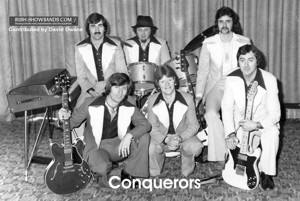 On the country side, showband veterans like
Brian Coll, Pat Ely, Larry Cunningham, Gene Stuart
and
Big Tom McBride, were
joined by newcomers like Ian Corrigan,
The Cotton Mill Boys,
Margo, Susan McCann,
Philomena Begley, and many more to form what many
critics would come to call the "Country and Irish" set.
On the country side, showband veterans like
Brian Coll, Pat Ely, Larry Cunningham, Gene Stuart
and
Big Tom McBride, were
joined by newcomers like Ian Corrigan,
The Cotton Mill Boys,
Margo, Susan McCann,
Philomena Begley, and many more to form what many
critics would come to call the "Country and Irish" set.
This "split" in the entertainment business had
some interesting consequences. Venues that had previously played
"any and all" bands slowly became either country or pop
venues or only played one style of music on certain nights. This
effectively reduced the number of gigs available for bands and
created more competition. RTE, still at this point with one TV
and one radio channel, started to reinforce this split by producing
shows which featured one or the other type of music.
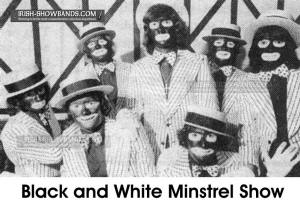 Throughout the early seventies, crowds
continued to slowly slip away from the ballrooms, but dancing was still more or less a five
to six nights a week industry, even during the winter months. A
handful of the older ballrooms had closed in the late sixties, but
by and large, the mainstays of the industry were still going well,
even though the record dance crowds of the mid sixties would never be
seen again. Halls that had once set records with crowds of 2,000
dancers or more, were now happy to attract 1,000-1,200.
Throughout the early seventies, crowds
continued to slowly slip away from the ballrooms, but dancing was still more or less a five
to six nights a week industry, even during the winter months. A
handful of the older ballrooms had closed in the late sixties, but
by and large, the mainstays of the industry were still going well,
even though the record dance crowds of the mid sixties would never be
seen again. Halls that had once set records with crowds of 2,000
dancers or more, were now happy to attract 1,000-1,200.
With competition at an all time high and the
growth in the number of dance venues going into decline, the early
70's introduced another major shift on the ballroom circuit: the
rise of "gimmick" bands. Sharp suits and smooth performances were no
longer enough to draw crowds, a new breed of bands hit the circuit.
One of the first (and most successful) gimmicks happened in 1970
when the middle-of-the-road Casino Showband, gave up their jackets
and opted to don war paint, buckskins and feathers to become the
"Indians." Not only did the change lift them to the top of the
circuit, but today, over forty five years later, they are still going
strong.
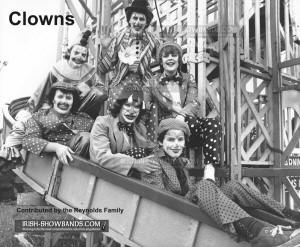 Other
bands followed suit: The Clowns (in full grease paint), The Cowboys
(of course), Tarzan and the Monkeys (actually wore monkey suits),
The Zulus (African natives), Bloody Morgan and the Pirates, the
Hollywood Stars and Magic and his light up suit were all attempts to
be different and capture the imagination of the dancing public.
Perhaps one of the worst conceived ideas happened when the Dixies
(long after the departure of Joe Mac and Brendan O'Brien) donned
black face, straw hats and became the Black and White Minstrel Show.
Of course, none of this enhanced the reputations of the showbands.
Other
bands followed suit: The Clowns (in full grease paint), The Cowboys
(of course), Tarzan and the Monkeys (actually wore monkey suits),
The Zulus (African natives), Bloody Morgan and the Pirates, the
Hollywood Stars and Magic and his light up suit were all attempts to
be different and capture the imagination of the dancing public.
Perhaps one of the worst conceived ideas happened when the Dixies
(long after the departure of Joe Mac and Brendan O'Brien) donned
black face, straw hats and became the Black and White Minstrel Show.
Of course, none of this enhanced the reputations of the showbands.
However, the "new" pop bands also brought
fresh ideas to
the Irish entertainment scene and the ballrooms. They started writing and recording their own
material. Although not unheard of, it was a change of pace from the
accepted showband practice of re-recording a British or American hit
in the hopes of striking gold. Country bands were a little slower to
change, scouring the latest Nashville releases for a song that would
appeal to the Irish audiences, a practice which, sadly, continues to this
day.
An important, and tragic, week in showband history occurred
at the end of July, 1975...splitting the decade down the middle. On
Tuesday, 29th of July, on a lonely country road in County Leitrim,
former
Royal Showband and Big 8 singer and bass player, Tom Dunphy, was
killed in a car accident. Tom had been the first showband singer to
release a record back in the early sixties. Along with Brendan
Bowyer, he also represented the "bridge" between the old and new.
Not only had they transitioned, very successfully, from the old
showband style of the Royal to the newer, more hip Big 8, they also
were one of the only Irish bands to keep their success going on both
sides of the Atlantic, perhaps heralding a new phase in the showband
landscape.
Sadly, Tom's death would be overshadowed two
days later (31st July) by an even greater tragedy when three members
of the Miami: Fran O'Toole, Brian McCoy and Tony Geraghty, were
gunned down in one of the most senseless acts of the Irish
"troubles." Like the Royal, the Miami had been one of the lucky
bands to successfully transition - first through the loss of half of
its members with the formation of the Sands, and again when their
lead singer, Dickie Rock left to form his own band. Undaunted, the
Miami had carried on, fronted by one of the most talented young musicians
Ireland had produced, Fran O'Toole. His boyish good looks,
songwriting talents and singing style had won many new fans for the
"old" Miami.
These two tragedies, in a way, ended the
"innocence" of the showband years. Although this is an all too
simplistic view, 1975 culminated a period of change which saw bands
breaking up after long periods of success, usually over money and
sometimes (although not often) because of artistic differences or
changes in musical direction. It also signaled the beginning of the
end of the ballroom circuit. Immediately after the Miami killings,
almost all Southern based bands refused to travel North. This meant
more bands vying for fewer gigs down South. Disco started to creep
into the ballrooms (initially as a cost saving alterative to the
relief groups which were put out of work). Eventually though, they
were able to draw their own crowds to greasy "chicken dinner" bar exemptions
which would fill every hotel across the country, further killing the
ballrooms. But more of this later.
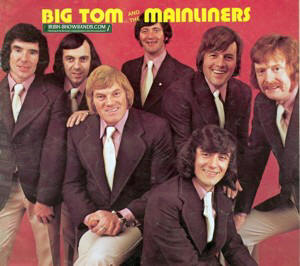 Once in a while, lightning would strike, and a
band would have a minor hit. A more likely path to success was to
write Ireland's entry for Eurovision, then known as the
Irish National Song Contest. Most winners would
enjoy minor
success at home, only to slowly fade away when they didn't win the big one. In
fact, between Ireland's win in 1970 with Dana's
All Kind of Everything,
and
Johnny Logan's stunning win in 1980, the best finish for
Ireland was the Swarbrigg's third place finish in 1977 with
It's
Nice To Be In Love Again.
Once in a while, lightning would strike, and a
band would have a minor hit. A more likely path to success was to
write Ireland's entry for Eurovision, then known as the
Irish National Song Contest. Most winners would
enjoy minor
success at home, only to slowly fade away when they didn't win the big one. In
fact, between Ireland's win in 1970 with Dana's
All Kind of Everything,
and
Johnny Logan's stunning win in 1980, the best finish for
Ireland was the Swarbrigg's third place finish in 1977 with
It's
Nice To Be In Love Again.
During this period, the country bands didn't stand still and before
long, a definite split was occurring between the "country and Irish"
bands, and more mainstream country acts like
Ray Lynam and the
Hillbillies, Bill Ryan and Buckshot, and the aforementioned
Cotton
Mill Boys, to name but a few.
As the seventies came to a close, the industry
was shifting once again. In 1977, The film, "Saturday Night Fever"
exposed a new craze that had gripped the world--disco music. In
Ireland, it took a little while for discos to disrupt the dance
scene. The first discos were small and catered mostly to teenagers.
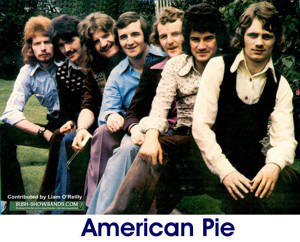 To some extent, the ballrooms and larger halls
were off limits to a DJ with a box full of 45's. The only exception
to this rule was for "relief." In fact, the first victims of the
discos were the local relief bands. "Relief bands" provided an
important service to the showband industry on several levels. Most
importantly, some of the country's showbands started as relief
groups themselves, honing their talents by providing one to two
hours of entertainment, sometimes on a nightly basis. In the early
days of the ballrooms, resident bands filled a similar role with
larger bands sometimes coming in on the weekends.
To some extent, the ballrooms and larger halls
were off limits to a DJ with a box full of 45's. The only exception
to this rule was for "relief." In fact, the first victims of the
discos were the local relief bands. "Relief bands" provided an
important service to the showband industry on several levels. Most
importantly, some of the country's showbands started as relief
groups themselves, honing their talents by providing one to two
hours of entertainment, sometimes on a nightly basis. In the early
days of the ballrooms, resident bands filled a similar role with
larger bands sometimes coming in on the weekends.
Additionally, the relief groups were the
"training grounds" for future showband musicians. Countless local
musicians have stories of being "discovered" by a big band who
either needed someone, or knew of another band that was looking to
fill a vacant slot in their lineup. If nothing else, many relief musicians enjoyed enough
of a "taste" of the big time, that they often went on to pursue a career
with the showbands. Finally, the demise of the relief group probably
reduced the pool of musicians who were interested in the showband
scene. Many local musicians started to turn to either rock or folk
music as an outlet for their talents, a fact that would become more
evident in the 1980's.
Click here to continue
Click on one of the genres below to learn more.

 In
1968, in what was to become the first of the "defections" that
rocked the showbands, Tommy Swarbrigg left Joe Dolan and the
Drifters and basically took the whole band with him, leaving only
Joe and brother Ben to carry on. Tommy formed
In
1968, in what was to become the first of the "defections" that
rocked the showbands, Tommy Swarbrigg left Joe Dolan and the
Drifters and basically took the whole band with him, leaving only
Joe and brother Ben to carry on. Tommy formed
 In
his book, Goodnight, God Bless and Safe
Home, Finbar O'Keefe quote's a Spotlight Poll of the top
twenty bands of 1969. They included The
Dixies, Dreams,
In
his book, Goodnight, God Bless and Safe
Home, Finbar O'Keefe quote's a Spotlight Poll of the top
twenty bands of 1969. They included The
Dixies, Dreams,  Perhaps the biggest shock came when
Perhaps the biggest shock came when
 On the country side, showband veterans like
Brian Coll, Pat Ely, Larry Cunningham, Gene Stuart
and
On the country side, showband veterans like
Brian Coll, Pat Ely, Larry Cunningham, Gene Stuart
and  Throughout the early seventies, crowds
continued to slowly slip away from the ballrooms, but dancing was still more or less a five
to six nights a week industry, even during the winter months. A
handful of the older ballrooms had closed in the late sixties, but
by and large, the mainstays of the industry were still going well,
even though the record dance crowds of the mid sixties would never be
seen again. Halls that had once set records with crowds of 2,000
dancers or more, were now happy to attract 1,000-1,200.
Throughout the early seventies, crowds
continued to slowly slip away from the ballrooms, but dancing was still more or less a five
to six nights a week industry, even during the winter months. A
handful of the older ballrooms had closed in the late sixties, but
by and large, the mainstays of the industry were still going well,
even though the record dance crowds of the mid sixties would never be
seen again. Halls that had once set records with crowds of 2,000
dancers or more, were now happy to attract 1,000-1,200.  Other
bands followed suit: The Clowns (in full grease paint), The Cowboys
(of course), Tarzan and the Monkeys (actually wore monkey suits),
The Zulus (African natives), Bloody Morgan and the Pirates, the
Hollywood Stars and Magic and his light up suit were all attempts to
be different and capture the imagination of the dancing public.
Perhaps one of the worst conceived ideas happened when the Dixies
(long after the departure of Joe Mac and Brendan O'Brien) donned
black face, straw hats and became the Black and White Minstrel Show.
Of course, none of this enhanced the reputations of the showbands.
Other
bands followed suit: The Clowns (in full grease paint), The Cowboys
(of course), Tarzan and the Monkeys (actually wore monkey suits),
The Zulus (African natives), Bloody Morgan and the Pirates, the
Hollywood Stars and Magic and his light up suit were all attempts to
be different and capture the imagination of the dancing public.
Perhaps one of the worst conceived ideas happened when the Dixies
(long after the departure of Joe Mac and Brendan O'Brien) donned
black face, straw hats and became the Black and White Minstrel Show.
Of course, none of this enhanced the reputations of the showbands.  Once in a while, lightning would strike, and a
band would have a minor hit. A more likely path to success was to
write Ireland's entry for Eurovision, then known as the
Once in a while, lightning would strike, and a
band would have a minor hit. A more likely path to success was to
write Ireland's entry for Eurovision, then known as the
 To some extent, the ballrooms and larger halls
were off limits to a DJ with a box full of 45's. The only exception
to this rule was for "relief." In fact, the first victims of the
discos were the local relief bands. "Relief bands" provided an
important service to the showband industry on several levels. Most
importantly, some of the country's showbands started as relief
groups themselves, honing their talents by providing one to two
hours of entertainment, sometimes on a nightly basis. In the early
days of the ballrooms, resident bands filled a similar role with
larger bands sometimes coming in on the weekends.
To some extent, the ballrooms and larger halls
were off limits to a DJ with a box full of 45's. The only exception
to this rule was for "relief." In fact, the first victims of the
discos were the local relief bands. "Relief bands" provided an
important service to the showband industry on several levels. Most
importantly, some of the country's showbands started as relief
groups themselves, honing their talents by providing one to two
hours of entertainment, sometimes on a nightly basis. In the early
days of the ballrooms, resident bands filled a similar role with
larger bands sometimes coming in on the weekends.